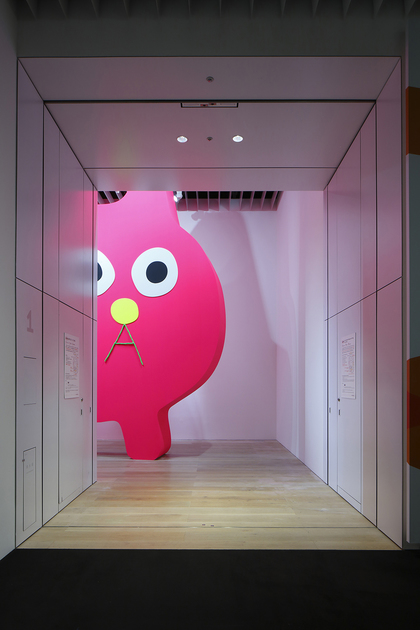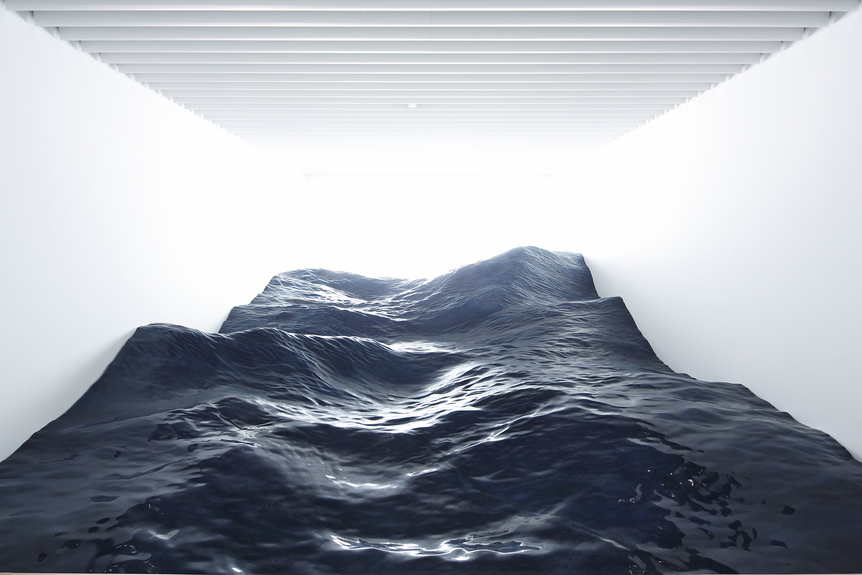-
From Current Issue
-
- Editor’s Letter Fire in the Heart
- Reviews I Gusti Ayu Kadek Murniasih
- Reviews 11th Seoul Mediacity Biennale: “One Escape at a Time”
- Dispatch Networked China
- One on One Monira Al Qadiri on Yukio Mishima
- Essays The rise of independent art spaces in pandemic-era Shanghai
- Features Tuan Andrew Nguyen
- Table of Contents
- Web Exclusives
- Archive
- Subscribe

R
E
V N
E
X
T
Installation view of Roppongi Crossing 2019: Connexions, at Mori Art Museum, Tokyo, 2019. All photos by Kioku Keizo; courtesy Mori Art Museum.
In the sixth edition of the exhibition series Roppongi Crossing, three Mori Art Museum curators—Reiko Tsubaki, Hirokazu Tokuyama, and Haruko Kumakura—grouped 25 Japanese and mostly young artists and collectives under the title “Connexions.” In a display of the creativity found in English as a second language, the choice of an archaic spelling of “connection” with an “x”—common shorthand for “cross” in Anglophone countries—further emphasizes the intersectional meaning of the word for the curators. In museum text and at the press briefing, there was a strong expression of despair at “the problem of the Internet,” which has created opportunities for inclusivity but also division. Elaborating on the show’s central idea via three themes—testing technology, social observation, and unusual pairings—Roppongi Crossing 2019 set itself the lofty goal of improving connections between art and its viewers, while fostering a deeper engagement with contemporary Japanese issues.
One of the most interesting developments in the Japanese contemporary art scene over the past five years is the more prevalent institutional display of art on potentially sensitive social and political topics, and this was evinced in the works that touch on sociological study. For example, Bontaro Dokuyama’s video installation My Anthem (2019) confronts viewers with the Imperial Japanese rising sun flag, signaling, for many of Dokuyama’s 30-something generation, the country’s repressed history of military aggression. The video presents lesser-heard narratives, recounted by Taiwanese seniors who had grown up as Japanese Imperial subjects. The men and women speak in Japanese and perform the Japanese anthem, “Kimigayo.” Dokuyama’s second contribution to Roppongi Crossing, the video installation Over There (2015), portrays those displaced from Fukushima due to the 2011 nuclear disaster. Soundless and masked, these figures point toward their former homes. Together, the two works connect two powerless groups, from Japan’s past and present.
In contrast to these more serious works, pieces that “test technology” were decidedly playful. Take, for example, Takehiro Iikawa’s Decoratorcrab – Mr. Kobayashi, the Pink Cat (2017), an installation of a giant, fluorescent feline that towered over visitors as they entered the first gallery. Coming from a photographic and video practice, Iikawa considers, in this work, the futility of documentation when he hands over the photographic act to the audience, daring them to try and capture all of the installation in one shot.
The third theme, “unusual pairings,” could apply to any number of works, but the most obvious example was the awesome installation by art collective Mé (homonymous with the Japanese word for “eye”). Titled Contact (2019), it captures a turbulent seascape rendered in a black solid gloss. Viewers can admire up close the ocean’s rolling movements, without the risk, in a contemporary evocation of the 19th-century artistic tradition of the sublime. Contact is a new visual pairing that renders a dynamic ocean view as an extraordinary life-size sculpture, against a 53rd floor window looking out at Tokyo’s vast cityscape.
Other powerful combinations are found in Fumiaki Aono’s found-object sculptures. Mending, Substitution, Consolidation, Serial Arrangement, “Restoration of a Mercedes-Benz,” Tokyo / Miyagi (A car buried in the ground of the Satohama Shell Mound in Okumatsushima) (2018) is a damaged car made whole again with items including a chest of drawers, wardrobes, a shoe, stacks of books and more. As the March 2011 tsunami forced itself ashore and then withdrew back into the ocean, land objects were indiscriminately pushed and piled together in a similar fashion to Aono’s compositions. His works propose a physical and symbolic rebuilding for Matsushima and other affected towns.
Despite the curatorial statement’s gestures toward global concerns such as “division,” these hot-button issues were far from the most urgent topics for the artists included in Roppongi Crossing 2019. Instead, many of the works deal with the fissures and potential (re)connections between past and current generations, between nature and the city, and reality and documentation. With a virtually all-Japanese line-up, it was the suggestion of cross-cultural connections that seemed most absent among the multiple faces of contemporary art in Japan today.
“Roppongi Crossing 2019: Connexions” is on view at the Mori Art Museum, Tokyo, until May 26, 2019.
To read more of ArtAsiaPacific’s articles, visit our Digital Library.



















